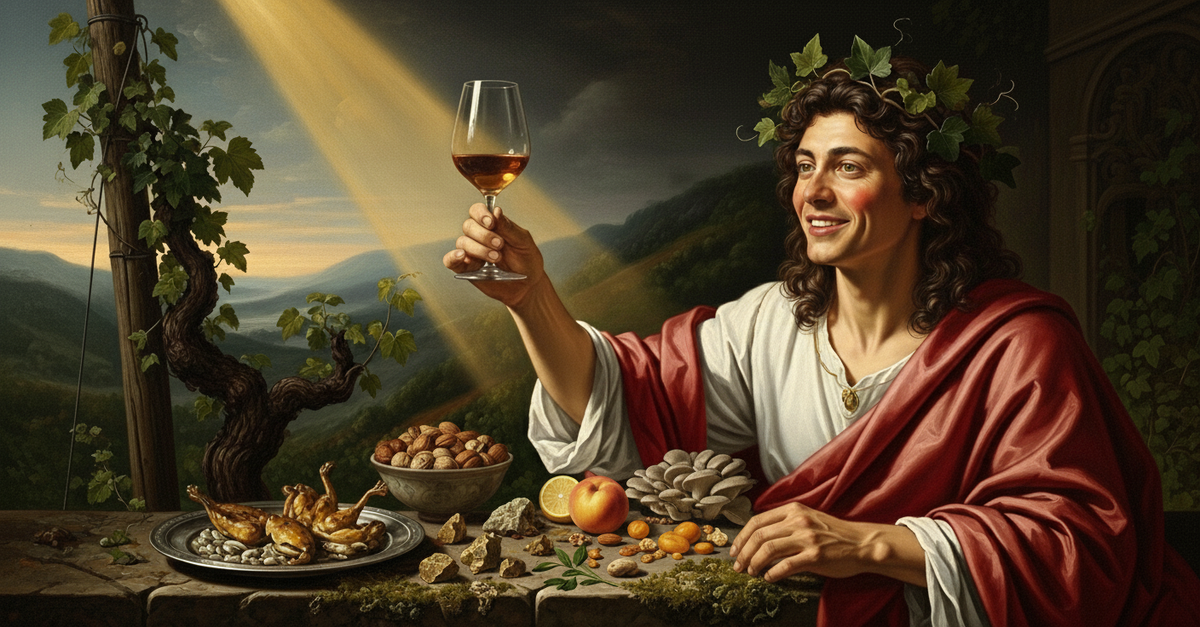The Myth of the Unstoppable Acid: Clos Ste. Hune 1993 Review
Unfiltered review of Trimbach Clos Ste. Hune 1993 Riesling—a dry, 96-point Alsatian icon. Explore its profound age, mineral depth, and investment potential.

The wine world is filled with beautiful lies—bottles that promise fire and deliver lukewarm tap water. But then there are the benchmarks, the undisputed classics that make you realize all the hype, for once, is actually earned. I'm talking about Trimbach's Riesling Clos Ste. Hune 1993.
If there is a white wine that embodies the Apollonian ideal—precision, clarity, and discipline—that Dionysus, the god of untamed ecstasy, still bows to, it's this one. At over three decades old, this Alsatian titan doesn't just age; it transforms. It’s Riesling stripped bare and given a soul of granite and lime.
The Color: Sunlight Caught in Amber
Hold it up to the light—and believe me, I've seen a few lights—and you'll see a profound, deep golden yellow. This is the color of old gold, of lantern light at vespers. It's clear, but the depth signals that this wine is no longer a baby in starched whites; it’s a veteran in a velvet robe. It speaks of two-and-a-half decades of patient transformation in the cellar.
The Nose: Petrichor and Paradox
On the nose, this is Alsace showing off its entire armory. You get the unmistakable, classic secondary Riesling perfume, but instead of the sharp green apple of youth, you find the tertiary chorus starting to sing: complex smoky mushrooms and nuts, hints of moss, and that glorious, unmistakable note of petrichor—the clean, earthy smell of rain on dry ground.
Don't mistake the age for exhaustion. There are still faint whispers of peach and vegetal notes, but the focus has shifted. It’s ethereal, loaded with complex minerals, and demands silence. It's the scent of the Muschelkalk limestone soil of the Rosacker Grand Cru vineyard itself—a subtle, pure, mineral aroma that separates the truly great from the merely good.
The Palate: Liquid Chalk and Dancing Acidity
First contact is delightful. This wine is vinified to be completely dry, but the concentration of fruit and age gives it a honey-ish texture. The body is medium-plus, conveying both richness and phenomenal complexity.
The palate is dominated by that signature dancing acidity—it's unbelievable, feeling like biting into a lemon when younger, but by now it is beautifully integrated and balanced. This core of high acidity is what gives the wine its vigour, firmness, and freshness. Flavors lean toward golden fruits, with nuances of peach and apricot, subtle citrusy palate, and a profound aftertaste of minerals. It’s mellow, gentle, and round, yet driven by an iron-straight line of precision.
The Finish: A Mellow Epilogue
The finish is long—as long as a full night of revelry. It's a testament to its superb balance. The mineral character and the feeling of wet stone freshness persist, leaving a lingering, ethereal sensation. It's a wine that stays with you, forcing you to pay attention, rewarding you for the patience you (or a previous owner) showed in keeping it for decades.
Behind the Altar: Terroir, Vintage, and the Puritanical Style
Trimbach's Clos Ste. Hune is often called the finest dry Riesling on the planet. This 1.67-hectare Monopole (wholly-owned parcel) sits directly in the heart of the Grand Cru Rosacker vineyard in Hunawihr, Alsace.
The genius lies in the stony argilo-calcaire (limestone) soil, known as Muschelkalk. This calcareous rock is the source of the wine's energy and precision, allowing the Riesling to develop phenomenal complexity and concentration of fruit while retaining its dry, succulent, and mineral character.
The Vintage Context: 1993
The 1993 vintage in Alsace was generally rated as Good. It was an early crop, though there was some rain during harvest. The Trimbach philosophy is built on a purist vision. For centuries, the family has produced wines that are structured, long-lived, fruity, elegant, and balanced. Winemaking is ruthless: grapes are picked as late as possible to maximize ripeness, gently pressed, and fermented in stainless steel to complete dryness, with no malolactic fermentation. This approach guarantees the racy acidity that allows this wine to age for many decades.
Investment Thesis: Scarcity and Longevity
This wine is more than a beverage; it's an asset.
- Rarity & Collectibility: Average annual production is a miserable 7,000 to 9,000 bottles for the entire world, making it a highly sought-after wine for collectors. This low production and exceptional aging potential make it an extremely rare treasure.
- Critic Scores: The 1993 is highly rated, with a consensus around the low-to-mid 90s (92-94 points). However, it has earned stellar individual praise, including 96/100 from Ian D'Agata Wine Review and community notes of up to 98 points.
- Aging Potential & Drinking Window: Clos Ste. Hune is built to transform gracefully over time. The 1993 vintage was previously given a drinking window that extended through 2023. However, reports from tastings as late as 2025 and earlier show that the wine remains vibrant, with dancing acidity and superb balance. This is a wine that takes at least seven or eight years to reach its peak, and based on the longevity of this lineage (vintages from the 1960s are still drinking well), your bottle should still be a phenomenal, complex experience.
Final Word From The God of Verity
Look, I love a young, aggressive white as much as the next god, but this is a reminder that the best wines play the long game. The 1993 Clos Ste. Hune is not an all-time great vintage; it's a testament to an all-time great vineyard and a purist producer who refused to compromise.
You're drinking history, geology, and a commitment to elegance that runs three centuries deep. Skip this, and you deserve the sad, anonymous Chardonnay at your next corporate banquet. Open this. Worship it.





